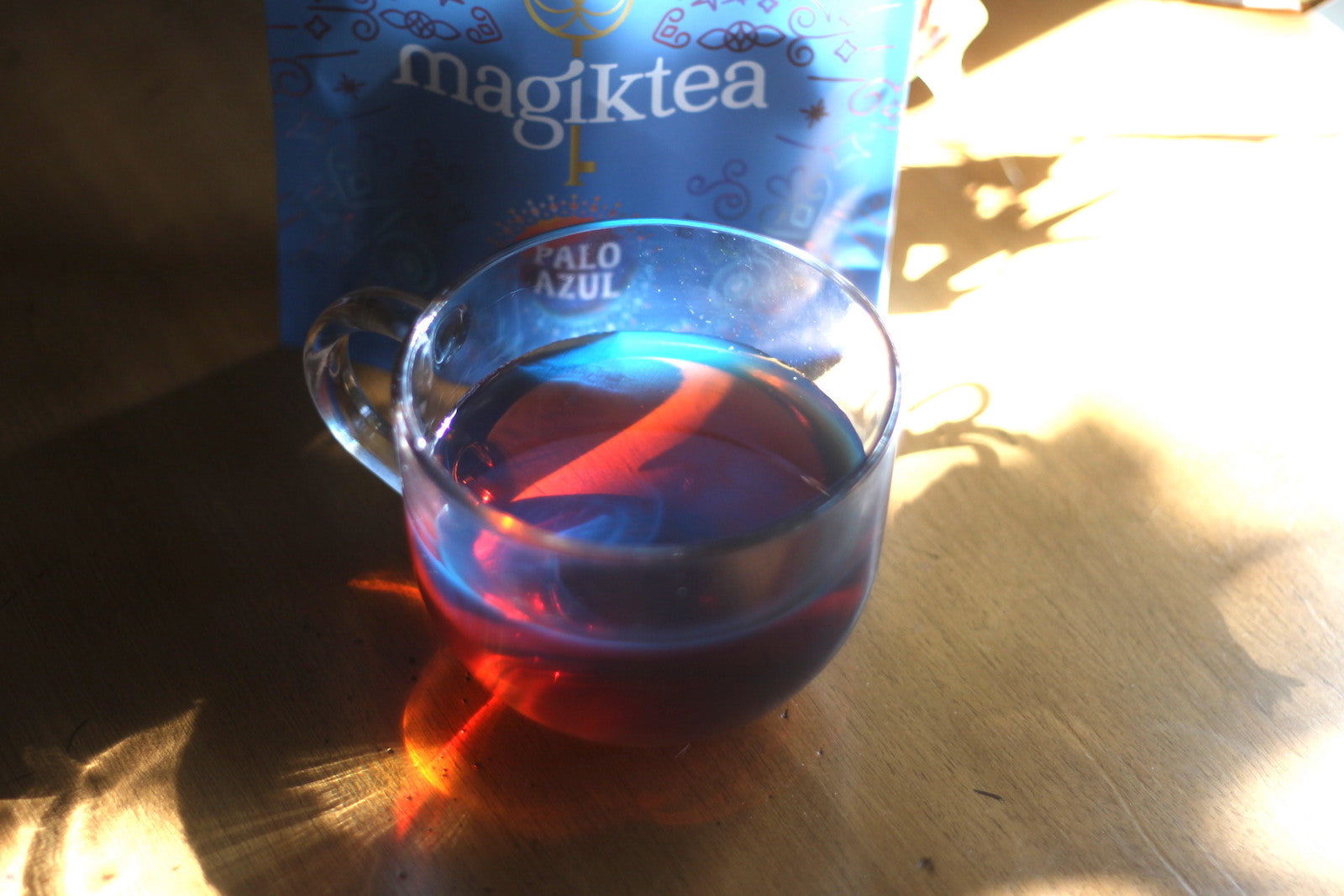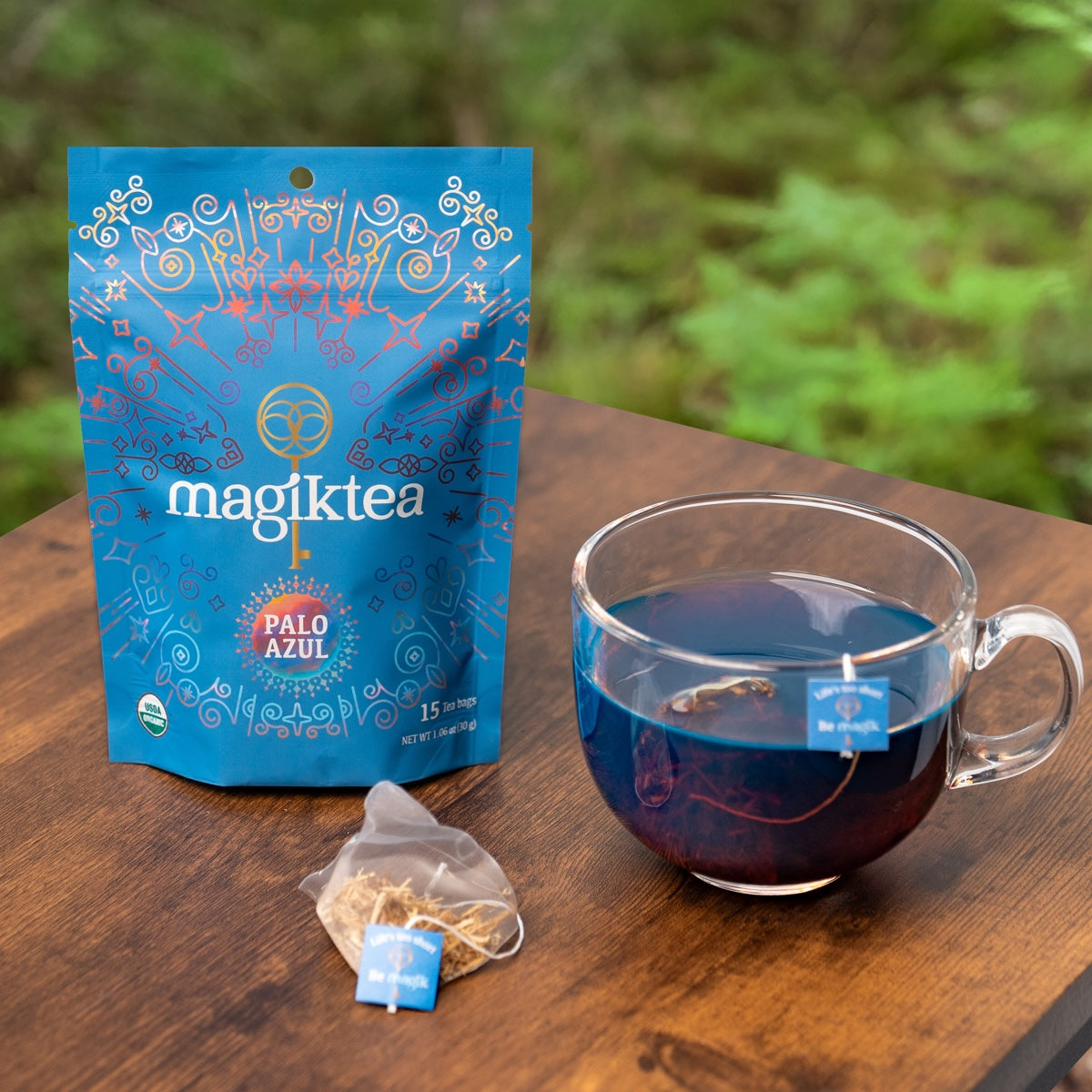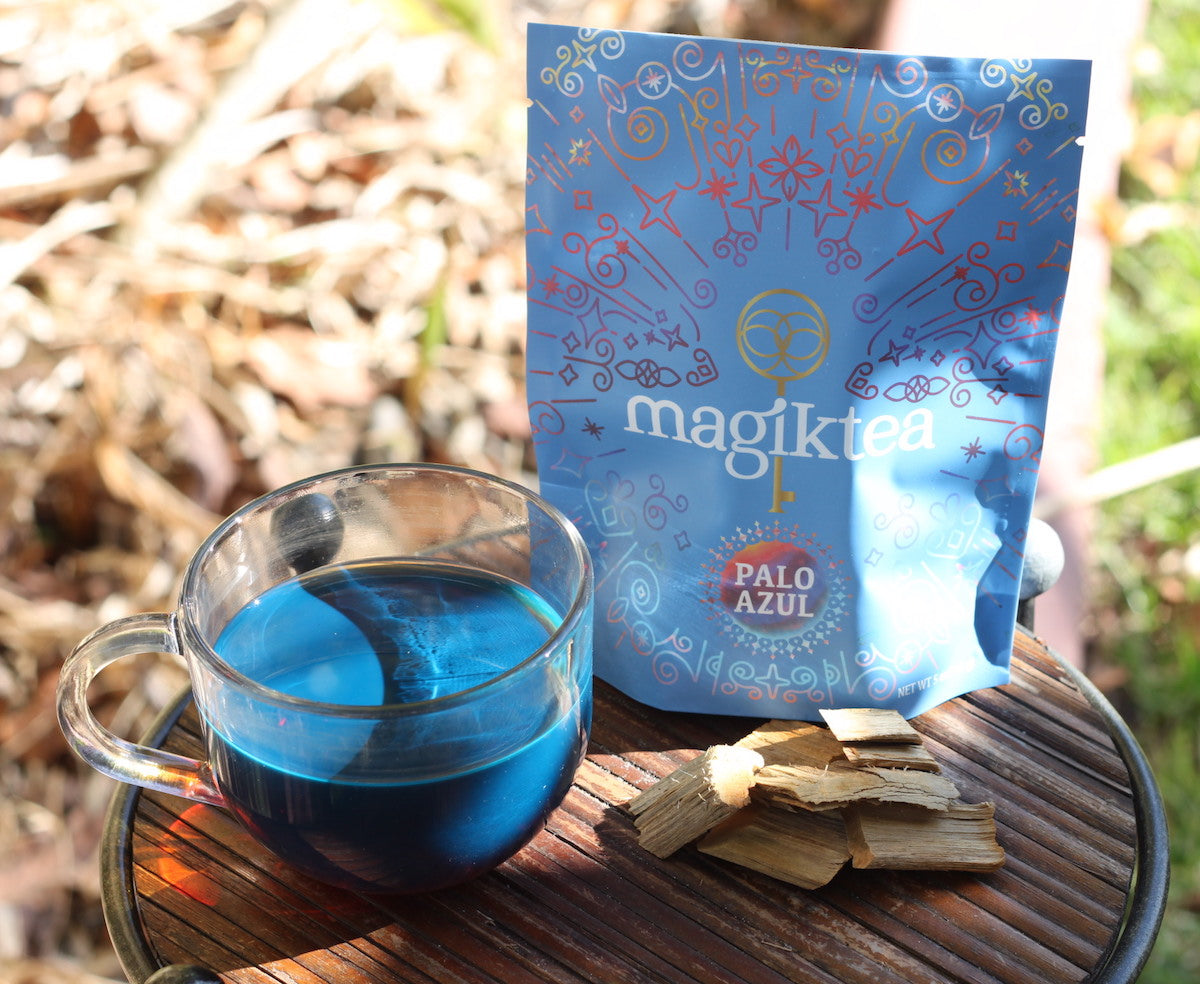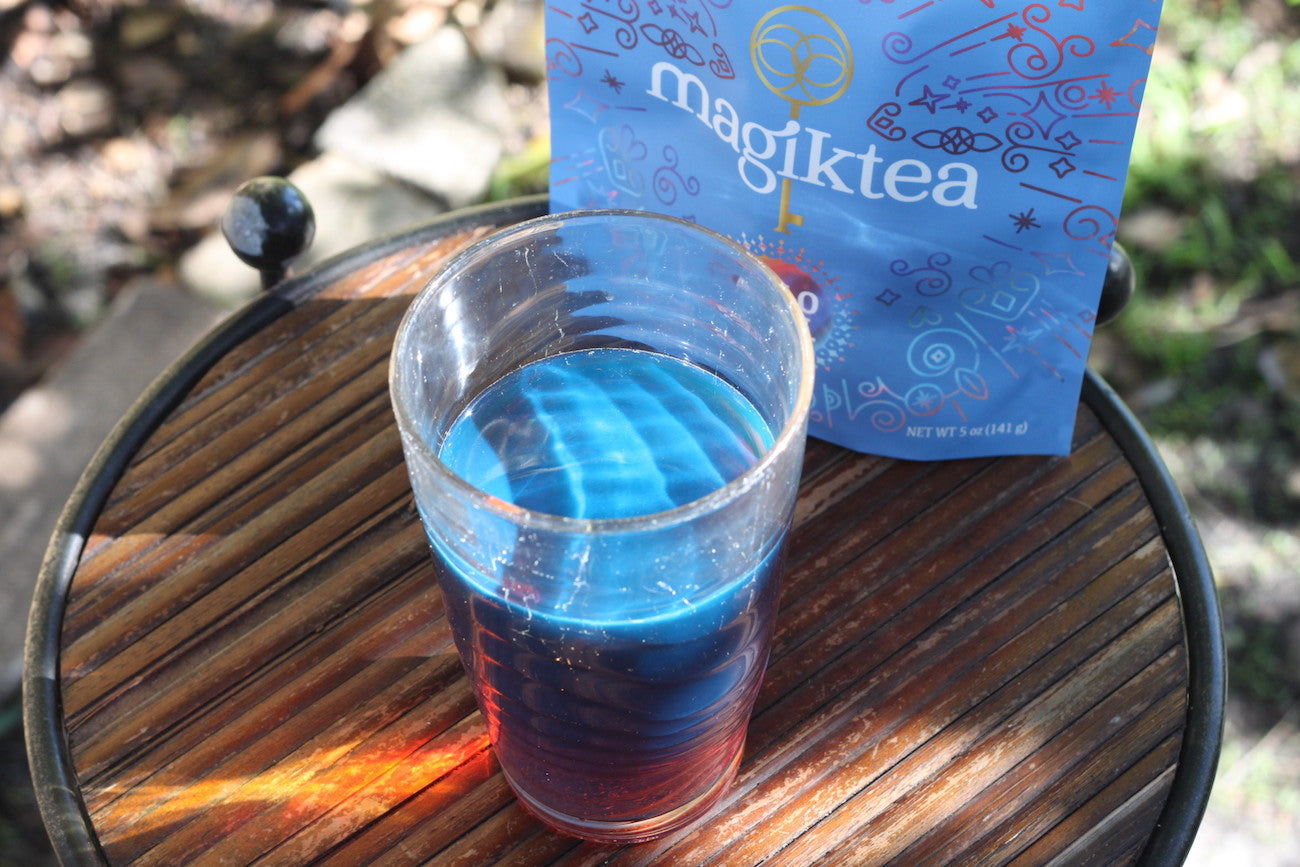There are 6 reasons...
- Shine Light: Palo azul's blue color is caused by the phenomenon of fluorescence, which means that it needs to absorb light in order to turn blue. Pour in a glass cup and go outside or use a flashlight so it can absorb light and fluoresce.
- Naturally Alkaline Spring Water: These studies (1, 2, 3) show that palo azul will only fluoresce in an alkaline solution (pH 7+). We recommend using spring water because it's naturally alkaline. Acidic, filtered or electrolyte added waters will not turn blue.
- Don't Overboil: A 2018 article mentions that boiling water can slightly lower its pH and it make it acidic. Try brewing it with less intense heat or microwaving a cup of water with a few palo azul chips.
- Not enough palo azul: If the tea looks very light and yellowish, it is not concentrated enough and you probably didn't use enough palo azul for the amount of water you prepared.
- Use a different container: Sometimes the problem is the container that it is being brewed in. Try cold brewing a tea bag in a glass cup and if it doesn’t turn blue at all, then the water is most likely below 7 pH because palo azul’s fluorescent nutrients are only activated in an alkaline solution.
- Low polyphenol concentration: Lastly, it could be that the concentration of polyphenol in your palo azul is too low. Polyphenols are the nutrients which are responsible for palo azul's (and many other plant's) fluorescence. Magiktea sources palo azul exclusively from a USDA Organic certified supplier and all our product is tested for optimal quality, so it will always look beautiful, blue, and magical! 😉
Alkaline water is key!

“In a slightly alkaline (pH ∼7.5) water solution, palo azul undergoes a fast reaction giving rise to a strongly blue-emitting compound. The fluorescence intensity of the aqueous solution depends strongly on pH.”
"The long-sought blue emitting compound of palo azul is a (polyphenol) reaction product, which is formed in a slightly alkaline water solution
“Robert Boyle discovered that addition of acid abolished the color and that addition of alkali brought it back.”
Palo Azul's Magical Fluorescence

Here, you can see how palo azul's magical fluorescence shines intensely because of the sunlight which it absorbs. This same phenomenon that gives palo azul its blue color is also what gives Aurora Borealis its extraordinary beauty. Aurora Borealis also absorbs sunlight and other energy from outer space through Earth’s magnetic field.
It captures energy particles from the Sun and when these particles reach Earth’s magnetic field, they strike the atoms with such force that its electrons are excited into a higher energy state. As an article beautifully describes, “it's this microscopic turmoil, miles above the Earth's surface, that gives the northern lights their eerie glow.”

Fluorescence in Nature
Mother nature truly is the greatest artist! We actually wrote an article about Fluorescence in Nature, in which we explore naturally occurring fluorescence in many animals, plants, and even minerals!







